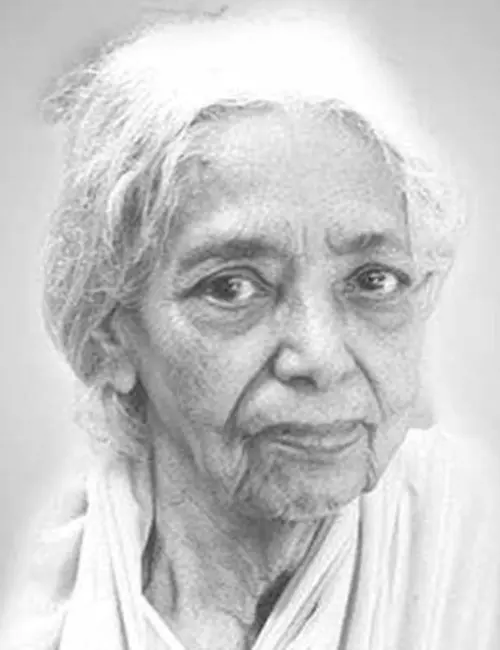Meet India’s First Woman PhD In Botany – She Is The Reason Your Sugar Tastes Sweeter!

Image: Twitter
2019 is the year we sent Chandrayaan 2 to the moon and this is also the same year when some underprivileged girls drop out of school and get married before they reach puberty. This is India, the country with the largest youth population and one of the fastest-growing economies, it is also the country suffering in the hands of gender discrimination and misogyny. Amidst all this despair, we’re going to tell you a refreshing story that will reaffirm your faith in woman power. The story of Padma Shri Janaki Ammal who played a significant role in India’s achievements in the field of botany. Well, many women have won Padma Shri in our country but Janaki Ammal received the award way back in 1977! A time when most women couldn’t get past high school.
Janaki Ammal achieved her Ph.D. from one of America’s finest universities, the University of Michigan. Even today, she’s among the very few Asian women who conferred an honorary doctorate from the University. She is credited for sweetening the indigenous variety of sugarcane and for her exceptional study on thousands of flowering plants at the chromosomal level. There’s even a flower named after her! A pure white delicate blooming called Magnolia Kobus Janaki Ammal. Want to know more about Janaki Ammal’s phenomenal story? Read on.
Early Life And Education
Edavaleth Kakkat Janaki Ammal was born in a small town Tellichery (Thallassery) in Kerala in 1897. Dewan Bahadur E.K. Krishnan, her father, was a sub-judge in the Madras Presidency. He took a keen interest in natural sciences and met with scholars to analyze the developments in the garden that he maintained. This interest is the most precious legacy that was passed on to his daughter Janaki. In fact, he would encourage all of his 19 children to see the natural world with the eye of curiosity. Janaki, who was the tenth child of Krishnan with his second wife Deviammal, moved to Madras after she completed her schooling from Tellichery. And from there on, her journey was a climb to academia and honor.
She finished her graduation from Queen Mary’s College, Madras. In 1921, she obtained her Honors Degree in Botany from Presidency College from the same province. She was working as a teacher at Women’s Christian College when the prestigious Barbour scholarship came to her doorstep. This was the time when Janaki’s marriage was planned to a first cousin. Choosing the scholarship over her marriage, Janaki went on to study at Michigan University and got her Master’s degree in the year 1925! After she returned to India, Janaki worked as a Professor at Maharaja’s College of Science in Trivandrum, Kerala between 1932 and 1934.
The Exceptionally “Sweet” Discovery
Leaving the teaching career behind, Janaki joined the Sugarcane Breeding Station in Coimbatore to work on the indigenous varieties of sugar cane. India imported Saccharum officianarum, the sweetest variety of sugar cane in the world during that time, from Southeast Asia. Importing something as basic as sugarcane was an expensive business for the country. Hence, Janaki’s efforts were focused on developing an Indian breed of the plant that was as good as Saccharum officianarum.
Being an expert in cytogenetics (the study of chromosomes and inheritance), Janaki manipulated the polyploid cells of the plant by cross-breeding hybrids. She developed a high yielding variety of sugarcane that could be grown in the fluctuating climatic conditions of India. And not just that, Janaki’s research helped in understanding the geographical areas where sugarcane grew the best. She also helped in establishing the fact that the sugarcane variety S. Spontaneum originated in our country.
In 1935, when CV Raman, one of the few Indians to have won the Nobel Prize founded the Indian Academy of Sciences, he chose Janaki for the research team. She joined the academy as a research fellow in the very first year of its operation, which is quite a big honor to any researcher. Sadly, her status as an unmarried woman from a lower caste shadowed her golden achievements. When she faced problems with her male peers regarding gender bias and caste discrimination, she left for London where she worked as an assistant cytologist at the John Innes Horticultural Institute.
This was the time when Germans attacked London and dropped bombs every now and then. Janaki would slide under her bed in the middle of the night during the bombings and wake up the next day to brush out the broken glass from the shelves and continue with her research. We can imagine the brave and extraordinarily passionate woman she was to stay in a place that was under constant attack for the sake of her love for Botany.
Janaki who studied her entire life about plants and biodiversity raised her voice against the construction of the hydro-power dam across the river Kunthipuzha in Silent Valley, Kerala.
Janaki’s personal life was very simple and Gandhian. The woman who has achieved so much in her life used to sweep the street outside the Botanical Survey of India (BSI), Calcutta which she re-organized as per the request of the then Prime Minister Jawaharlal Nehru himself. She was simple, down to earth, and bold making her a true inspiration for all the women across the globe.
















